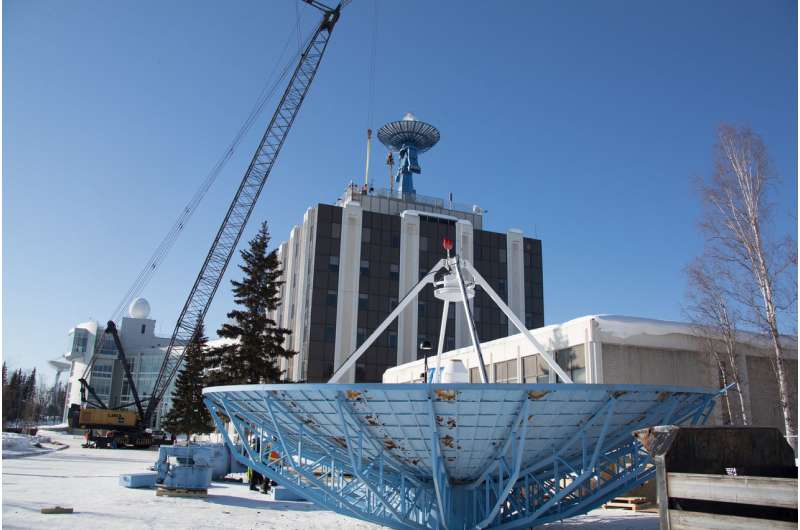New antenna in Alaska expands spacecraft communications capabilities

NASA's newest communications antenna became operational today following a ribbon-cutting ceremony at the Alaska Satellite Facility in Fairbanks. The antenna will increase the agency's communications support to Earth-observing missions.
NASA spacecraft collect massive amounts of scientific data every day, but there are no fiber cables or internet hookups in space. How do they transmit that data to the ground or receive commands from mission operators? That's where the agency's three communications networks come in: the Deep Space Network, the Space Network and the Near Earth Network (NEN).
The new antenna is part of the NEN, which provides communications support to spacecraft up to 1.2 million miles from Earth. The NEN is a direct-to-ground communications network, meaning that it doesn't use any space-based assets, like Tracking and Data Relay Satellites, to relay communications. Instead, NASA missions communicate directly with the network's ground-based antennas when they are within line of sight. In addition to their data transfer services, NEN antennas provide constant telemetry, tracking and command for the spacecraft. This helps track the spacecraft's location in space and take care of "housekeeping" items, such as adjusting the satellite's orbit or re-aligning the solar panels.
AS-2, as the antenna is called, replaces an outdated antenna at the Alaska Satellite Facility. It greatly expands on the services the previous antenna was able to provide. AS-2's location in Alaska is ideal for communicating with polar-orbiting missions, most of which are Earth science missions. High-latitude locations like Fairbanks can communicate numerous times per day with polar-orbiting satellites. The antenna will support several current and future Earth-observing missions that use the Alaska Satellite Facility, including Aqua, Aura and Soil Moisture Active Passive (SMAP). These missions provide critical data about Earth, such as information on the water cycle, air quality and other aspects of the environment.
AS-2 is equipped with both S-band and X-band communications capabilities. These bands are radio frequency ranges that many spacecraft use to communicate. X-band has greater available bandwidth than than S-band.
Like its sister antennas, AS-1 and AS-3, the University of Alaska Fairbanks (UAF) will operate AS-2. The antennas have become well-known among students and alumni at the university, and many alumni spoke with NASA team members about how the data for their doctorate degrees was made possible through the NEN antenna.
"When we installed the new antenna, people stopped by and told us their stories about it," said Joe O'Brien, the AS-2 project manager at University of Alaska Fairbanks. "It was kind of neat to hear people's connection to the antenna, to know they care about it."
The NEN is located throughout the world. Network assets owned by NASA are located at Wallops Flight Facility in Virginia; McMurdo Ground Station in Antarctica; White Sands Complex in New Mexico; and owned by NASA, but operated by UAF, is the Fairbanks facility. The NEN also contains commercially owned stations from Kongsberg Satellite Services, South African National Space Agency, Swedish Space Corporation and the U.S. Navy.
Provided by NASA





















